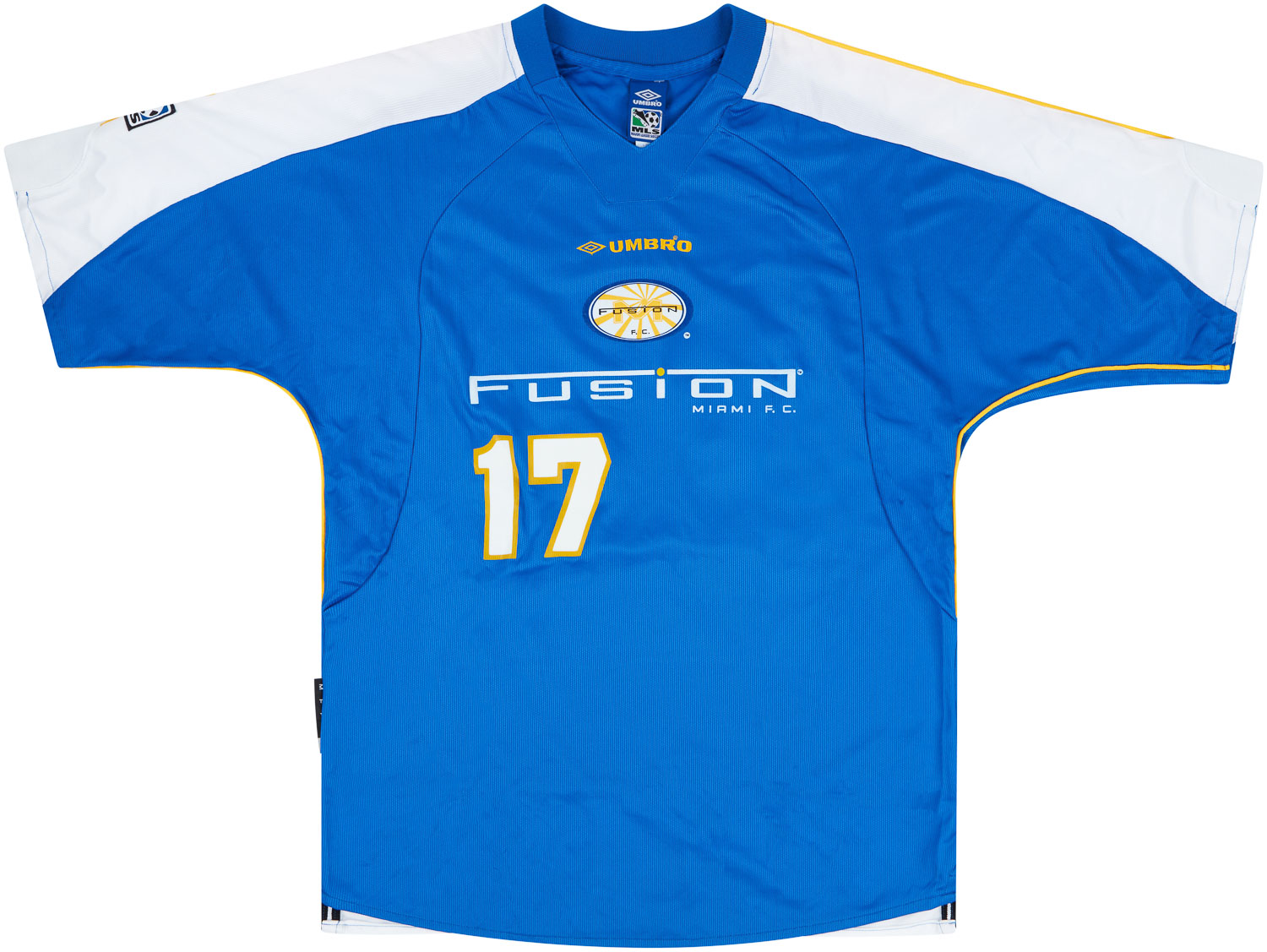Miami Fusion
Introduction Miami Fusion Football Club, though a brief chapter in the annals of American soccer, left an indelible mark on the sport’s history in the United States. Founded in 1997, the club emerged as a beacon of soccer pride in the vibrant city of Miami, known not only for its stunning beaches but also for […]
2001 Miami Fusion Match Issue Home Shirt Serna #17
237.99£ - ca: €281
Introduction
Miami Fusion Football Club, though a brief chapter in the annals of American soccer, left an indelible mark on the sport’s history in the United States. Founded in 1997, the club emerged as a beacon of soccer pride in the vibrant city of Miami, known not only for its stunning beaches but also for its multicultural diversity. The Miami Fusion represented a melting pot of cultures, drawing fans from various backgrounds and uniting them under the banner of soccer. This article explores the club’s journey, achievements, and its lasting impact on the local soccer scene.
Club History
The Miami Fusion was established in 1997 as one of the charter members of Major League Soccer (MLS), which sought to create a sustainable professional soccer league in the United States following the success of the 1994 FIFA World Cup. The inaugural season saw the Fusion struggle in terms of attendance, but over time, the excitement around the club began to grow. Playing its home matches at the historic Lockhart Stadium in Fort Lauderdale, the Fusion developed a fierce rivalry with nearby teams, particularly the Tampa Bay Mutiny.
Despite its quick start, the Fusion faced challenges, not least of which were financial difficulties and the changing landscape of American soccer. After a strong initial showing, including playoff appearances, the club struggled with consistency over the following seasons. Ultimately, Miami Fusion played its last match in 2001, when the club was folded due to a combination of poor attendance and ongoing financial issues. This was a disappointing conclusion that left many fans yearning for a return of top-tier soccer to Miami.
Achievements
In its short existence, Miami Fusion achieved notable accolades that cemented its place in MLS history. The 2001 season was particularly significant as the club not only reached the playoffs but won the prestigious Supporters’ Shield. This award is given annually to the team with the best regular-season record in MLS, highlighting Miami’s talent and potential at the peak of their performance. The Fusion finished the season with 61 points, significantly outpacing their competitors with a record of 18 wins, 9 draws, and 5 losses.
Despite its strong regular-season showing, the Fusion faced disappointment in the playoffs, where they were eliminated in the first round. However, the Supporters’ Shield achievement remains a high point in the club’s history, showcasing the competitive spirit and potential of soccer in Miami.
Significant Players and Matches
During its brief existence, Miami Fusion was home to several notable players who would go on to shape the future of soccer in America. Among them was the club’s star striker, Clint Mathis, who made a name for himself with his impressive scoring ability and dynamic playing style. Mathis was known for his electrifying performances that often left spectators on the edge of their seats. Other key players included Diego Serna and Chris Henderson, both of whom were instrumental in the club’s successes.
One memorable match took place on July 19, 2000, when the Fusion faced off against the New England Revolution. This game is often remembered for its thrilling display of skill and teamwork, with the Fusion emerging victorious 5-2, showcasing the attacking prowess of Mathis and his teammates. Such matches not only thrilled fans but also contributed to the growing legacy of the Fusion in MLS history.
Cultural Impact
Miami Fusion’s influence extended beyond the pitch; the club played a crucial role in promoting soccer within a region steeped in diverse cultures. With a fanbase that reflected Miami’s multicultural identity, the Fusion created a vibrant soccer community. Game days at Lockhart Stadium were occasions for celebration, where fans from different backgrounds came together, fostering a sense of unity and local pride.
The club’s existence contributed to the broader acceptance of soccer in Florida, paving the way for future professional soccer ventures in the area. Though Miami Fusion may no longer play, the spirit of the team continues to resonate with fans, inspiring local youth to pursue soccer, and encouraging a sense of community that champions the beautiful game.
Conclusion
Miami Fusion may have been short-lived, but its legacy endures in the hearts of many soccer enthusiasts in the region. The club’s achievements, particularly its 2001 Supporters’ Shield victory, highlight its competitiveness in the American soccer landscape. Moreover, the impact of the Fusion on local culture and its contributions to the growth of soccer in Miami signify its place in history, inspiring fans and players alike. As Miami continues to develop as a soccer hotbed, the memory of Miami Fusion lives on, representing a formative period in the evolution of the sport in the United States.
